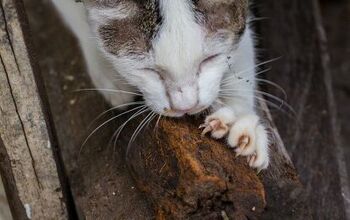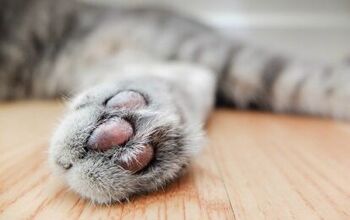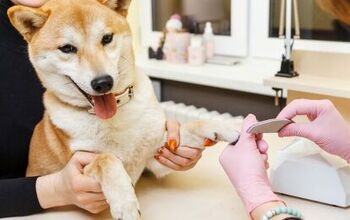Study: Declawing Cats Has Long-Term Impact on Behavior

In many countries, onychectomies ( declaw surgery on cats) are illegal as research has shown that there are many short-term complications from such surgeries. Where it is legal, cat owners often choose to do it because of furniture damage, but now new research that looked at long-term effects post-declaw surgery builds an even stronger case against elective declawing.
Related: New Jersey May Be The First State To Prohibit Cat Declawing
Researchers looked at 274 cats, of whom 137 were not declawed, and 137 were, including 33 cats who were declawed on all four paws. They were looking for signs of pain and excessive licking or fur chewing (barbering) and they also reviewed the medical histories of the cats, looking for bad behavior patterns.
They found that in cats who were declawed, there were significantly more incidences of biting, aggression and over grooming, as well as inappropriate urination than in the cats who were not declawed. Additionally, cats who had been declawed had back pain diagnoses that were three times as high than those cats who were not declawed, and the researchers believe this could potentially be because of the way declawing changed the gait of the cat’s walk, or a shift in weight to their pelvic limbs because of chronic pain at the surgery site.
Nicole Martell-Moran, lead author and vet in a Houston, Texas cat-only clinic said that these findings reinforced her belief that declawed cats who had bad behaviors were not necessarily bad cats, but more likely, in pain and acting out. Chronic pain in the cats could be forcing unwanted behaviors like aggression and biting, or using the bathroom outside of the litter box, and this seems to stem from declaw surgery.
The Diplomates of the American College of Veterinary Surgeons recommend removing most of the distal bone of the toe in surgical guidelines for declawing. When Moran and her colleagues looked at the declawed cats, 63% of them had fragments of that bone (P3) remaining, which means the cats were the victims of poor surgical technique that may have contributed to significant residual pain for the cats.
Related: How to Choose the Right Scratching Post for Your Cat
The authors of the study found that back pain and inappropriate behaviors were higher in those cats, but stress that even the best protocol and surgery is still risky for the cats. When they are declawed, they are forced to bear weight on the cartilage that was meant to shield joint space, and could be why cats would choose to urinate in a soft surface like a carpet instead of a rocky gravel like a litter box. And, like most animals, when in pain, they may resort to biting, which can lead owners to surrender their cats.
Moran hopes that as more and more scientific evidence like this comes to show declawing as detrimental, more veterinarians will consider elective declawing surgeries for their clients.

More by Lori Ennis























